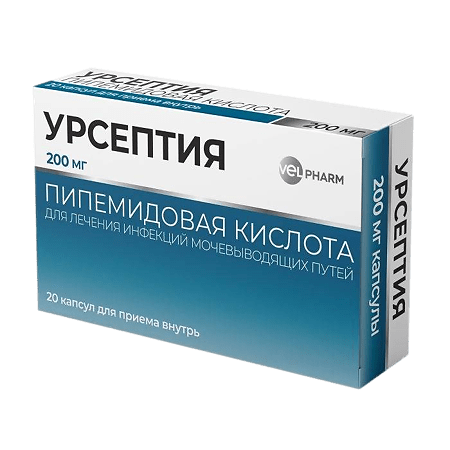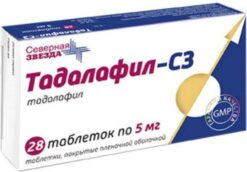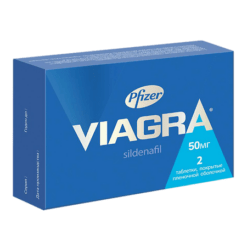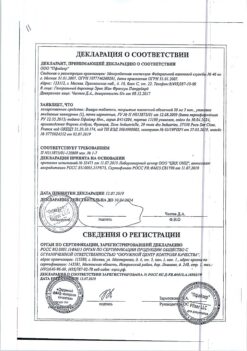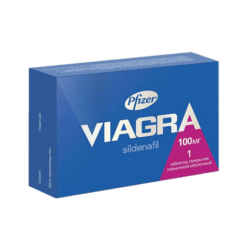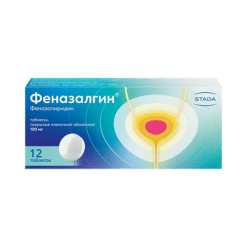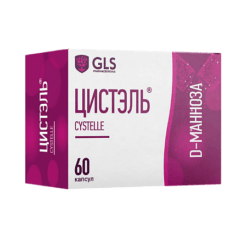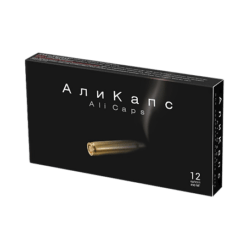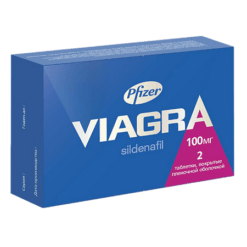No products in the cart.
Urseptia, 200 mg capsules 20 pcs
€13.88 €12.03
Description
Pharmacotherapeutic group: ‑quinolone antimicrobial agent.‑
ATX code: J01MB04
Pharmacological properties Pharmacodynamics
It belongs to the group of quinolone drugs and is used in the treatment of urinary tract infections caused by pathogens sensitive to pipemic acid.
Pipemic acid inhibits bacterial DNA-topoisomerase II, which leads to disintegration of the bacterial DNA. This action is more pronounced against microorganisms that are in the phase of proliferation. High concentrations of pipemidic acid inhibit both RNA synthesis and bacterial protein synthesis.
The drug has a bactericidal effect on most gram-negative aerobic microorganisms (Proteus vulgaris, Proteus mirabilis, Klebsiella pneumoniae, Pseudomonas aeruginosa, Escherichia coli, Neisseria spp. etc.).
The percentage of emergence of resistance ranges from 10% (Escherichia coli, Staphylococcus aureus) to 62% (Pseudomonas aeruginosa). Gram-positive microorganisms are resistant to pipemic acid. It is not active against anaerobes.
Pipemic acid produces high concentrations in urine; activity increases with alkalinization of urine.
Pharmacokinetics
After oral administration it is quickly absorbed, bioavailability is 30-60%. After oral administration at a dose of 400 mg, maximum concentration of pipemidic acid (3.5 µg/ml) is reached after 70-80 minutes.
The binding to plasma proteins is approximately 30% and depends on the serum concentration of pipemic acid.
High concentrations of pipemidic acid are produced in the kidneys, urine and prostate fluid. Pipemidic acid, like other quinolone compounds, penetrates through the placenta and in trace amounts into the mother’s milk. Pipemidic acid is mostly excreted from the body through kidneys in unchanged form. Daily urine contains 50-85% of the administered dose of the drug. Excretion of pipedic acid directly depends on creatinine clearance. Half-life of the drug in normal renal function is 2 hours 15 minutes, and total clearance is 6.3 ml/min. In patients with impaired renal function, slightly higher concentrations of pipemidic acid in plasma are observed than in healthy volunteers. The plasma elimination half-life is slightly prolonged and is 5.7-16 hours.
Indications
Indications
Acute and chronic infectious and inflammatory diseases of the urinary tract caused by microorganisms sensitive to pipemidic acid, including: pyelonephritis, cystitis, prostatitis.
Pharmacological effect
Pharmacological effect
Pharmacotherapeutic group: antimicrobial agent – quinolone.
ATX code: J01MB04
Pharmacological properties Pharmacodynamics
Belongs to the group of quinolone drugs and is used in the treatment of urinary tract infections caused by pathogens sensitive to pipemidic acid.
Pipemidic acid inhibits bacterial DNA topoisomerase II, which leads to disintegration of bacterial DNA. This effect is more pronounced in relation to microorganisms that are in the proliferation phase. High concentrations of pipemidic acid inhibit both RNA synthesis and bacterial protein synthesis.
The drug has a bactericidal effect on most gram-negative aerobic microorganisms (Proteus vulgaris, Proteus mirabilis, Klebsiella pneumoniae, Pseudomonas aeruginosa, Escherichia coli, Neisseria spp., etc.).
The incidence of resistance ranges from 10% (Escherichia coli, Staphylococcus aureus) to 62% (Pseudomonas aeruginosa). Gram-positive microorganisms are resistant to pipemidic acid. Not active against anaerobes.
Pipemidic acid creates high concentrations in urine, activity increases when urine is alkalinized.
Pharmacokinetics
After oral administration, it is rapidly absorbed, bioavailability is 30-60%. After oral administration at a dose of 400 mg, the maximum concentration of pipemidic acid (3.5 μg/ml) is achieved after 70-80 minutes.
Plasma protein binding is approximately 30% and depends on the concentration of pipemidic acid in the blood serum.
High concentrations of pipemidic acid are created in the kidneys, urine and prostate fluid. Pipemidic acid, like other quinolone compounds, penetrates the placenta and in trace amounts into breast milk. Pipemidic acid is mostly excreted from the body through the kidneys in unchanged form. 50-85% of the administered dose of the drug is determined in daily urine. The release of pipemidic acid is directly dependent on creatinine clearance. The half-life of the drug with normal renal function is 2 hours 15 minutes, and the total clearance is 6.3 ml/min. Patients with impaired renal function have slightly higher plasma concentrations of pipemidic acid than healthy volunteers. The half-life from blood plasma is somewhat extended and amounts to 5.7-16 hours.
Special instructions
Special instructions
Side effects in most cases are mild and transient, usually not requiring discontinuation of the drug. If allergic reactions to the drug occur, you must stop using it.
During treatment, ultraviolet irradiation should be avoided due to the high risk of photosensitization. Patients with glucose-6-phosphate dehydrogenase deficiency may develop hemolytic anemia.
With long-term use of the drug, you should monitor general blood counts, determine the functions of the liver and kidneys, and repeat the determination of the sensitivity of the microflora to the drug.
During the course of treatment, it is necessary to increase the amount of fluid consumed (under the control of diuresis).
Prescribe with caution to patients over 70 years of age (due to the increased incidence of side effects in the elderly) and patients with impaired renal function (creatinine clearance > 10 and < 30 ml/min) (contraindicated in oliguria and anuria, creatinine clearance < 10 ml/min); dose adjustment and regular monitoring of the patient's condition are required.
Exercise caution when prescribing the drug to patients with a history of cerebrovascular accidents (including cerebral hemorrhage, cerebral vascular spasms), as well as convulsions.
A false-positive reaction to urine glucose may occur when using Benedict’s reagent or Felling’s solution. It is recommended to use enzymatic reactions with glucose oxidase.
Impact on the ability to drive vehicles and machinery
During the treatment period, the patient should refrain from engaging in potentially hazardous activities that require increased concentration and speed of psychomotor reactions.
Active ingredient
Active ingredient
Pipemidic acid
Composition
Composition
For one capsule:
Pregnancy
Pregnancy
The use of the drug during pregnancy is contraindicated.
Pipemidic acid is excreted in breast milk, therefore, when prescribing the drug during lactation, breastfeeding should be discontinued.
Contraindications
Contraindications
– hypersensitivity to pipemidic acid or any of the components of the drug;
– severe liver dysfunction (including cirrhosis);
– severe renal dysfunction (creatinine clearance (CC) < 10 ml/min;
– diseases of the central nervous system (epilepsy and other neurological conditions with a reduced seizure threshold);
– porphyria;
– lactase deficiency, lactose intolerance, glucose-galactose malabsorption;
– history of allergic reactions to quinolones;
– pregnancy and breastfeeding;
– children under 18 years of age (the period of formation and growth of the skeleton).
With caution
– patients with renal failure (creatinine clearance > 10 and < 30 ml/min);
– old age (over 70 years);
– cerebrovascular accident;
– deficiency of glucose-6-phosphate dehydrogenase.
Side Effects
Side Effects
From the digestive system: nausea, vomiting, diarrhea, pseudomembranous colitis, gastralgia, anorexia, heartburn, bloating or abdominal pain, constipation.
From the nervous system: blurred vision, vertigo, headache, agitation, depression, confusion, hallucinations, tremors, prolonged convulsions associated with cerebral edema, sleep disorders, sensory disturbances.
From the skin: itching, rash, photosensitivity with erythema, toxic epidermal necrolysis.
Laboratory indicators: hemolytic anemia (in patients with glucose-6-phosphate dehydrogenase deficiency), eosinophilia, reversible thrombocytopenia (in elderly patients and in patients with renal failure).
Other: superinfections, acute arthropathy, tendinitis.
Interaction
Interaction
Pipemidic acid causes inhibition of the P450 enzyme, and therefore, when used simultaneously with pipemidic acid, the metabolism of theophylline and caffeine slows down. The half-life of theophylline increases with simultaneous use of pipemidic acid, its concentration in the blood serum increases by 40-80%. It is necessary to monitor the concentration of theophylline in the blood plasma during the use of pipemidic acid. With the use of pipemidic acid, as well as other quinolone antibiotics, there is an increase in the concentration of caffeine in the blood serum (2-4 times).
Antacids and sucralfate significantly slow down the absorption of pipemidic acid. The interval between taking these drugs should be at least 2-3 hours. At the same time, a similar effect was not observed with the simultaneous use of cimetidine and ranitidine.
Pipemidic acid may enhance the anticoagulant effect of warfarin when administered concomitantly. When used simultaneously with non-steroidal anti-inflammatory drugs, seizures may occur.
When taken in combination with aminoglycosides, synergism is observed regarding the bactericidal effect.
Overdose
Overdose
There are no reports of death or life-threatening side effects due to drug overdose. There is no specific antidote.
Symptoms: nausea, vomiting, dizziness, headache, confusion, tremors, convulsions.
Treatment: gastric lavage after recent use (less than 4 hours), intake of activated charcoal, forced diuresis, hemodialysis; if side effects from the nervous system occur (including epileptic convulsions), symptomatic therapy (diazepam) is prescribed.
In case of overdose, the patient should be under medical supervision.
Storage conditions
Storage conditions
In a place protected from light at a temperature not exceeding 25 ° C.
Keep out of the reach of children.
Shelf life
Shelf life
5 years.
Do not use after expiration date.
Manufacturer
Manufacturer
Velfarm LLC, Russia
Additional information
| Shelf life | 5 years. Do not use after the expiration date. |
|---|---|
| Conditions of storage | In a light-protected place at a temperature not exceeding 25 ° C. Keep out of reach of children. |
| Manufacturer | Welfarm, Russia |
| Medication form | capsules |
| Brand | Welfarm |
Related products
Buy Urseptia, 200 mg capsules 20 pcs with delivery to USA, UK, Europe and over 120 other countries.

